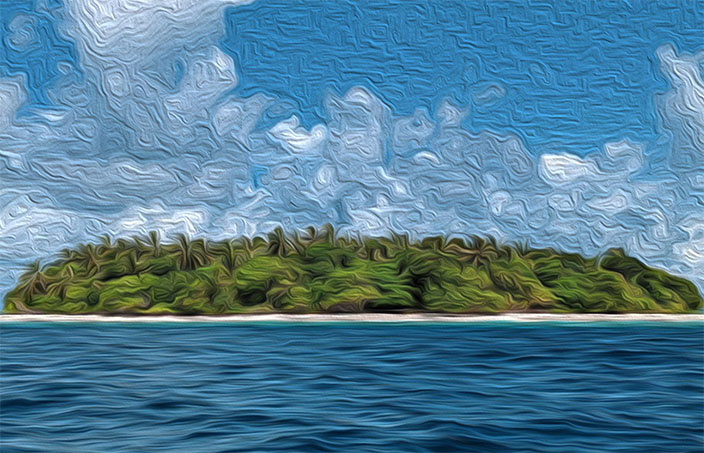Micronesians:
Where Did They Come From?
I’ll always remember walking down the road in Chuuk many years ago and glimpsing the flickering light in the wooden houses–the light of the kerosene lamp.
In the old days, before most houses had electrical power, long before cell phones and even before television sets, it was story-telling time as darkness fell. The day’s work had been done, the food cooked and distributed to the family. Now the gathered family could relax in the couple of hours before the children went to sleep.
Story time for the family. This was when the older people in the house might recite their stories of the past: tales of what life was like under the Japanese, accounts of how the lineage had acquired this or that piece of land… sometimes even the old legends of the arrival of the lineage or clan on this island.
The stories were told to entertain, but they were intended to do much more than that. They offered listeners a link to the past, a relationship with the island community, an anchor in time.
The stories were meant to help stretch the minds of the young–to help young people understand where they came from, so that they might better grasp who they are. Any understanding of people today is always rooted in the past. So is just about everything else in an island society. We are what we are because of our ancestors.
During my younger days I myself was never fond of history. Many years ago when a friend of mine told me with excitement in his voice that he had been accepted to do a doctoral degree in history, I congratulated him. But I couldn’t help wondering what it was about history that fascinated him. For me it was just a long list of deceased leaders, dates hard to remember, and events long buried in the past. Dead and best forgotten, I thought to myself.
But then again, I was no islander. Otherwise, I would have been trained from an early age to understand that the past, far from being dead and forgotten, continually interacts with the present.
That was part of the thrall of those bedtime stories in the near-dark told by an older member of the family. Just as the spirits of departed ancestors once would speak to islanders about their present concerns, the old stories continued to link the past with today’s world. How did we happen to settle in this part of the island rather than over there, where the fishing is so much better? How could my grandparents on my mother’s side meet when grandfather lived on another island 200 miles away? Why does it always feel as if we’re entering enemy territory when our family visits that one village on the other side of the island?
What happened in the past never seems over and done with. Its ghost appears in so much of our island life today. It taunts us with its presence and demands our attention.
How far back into the past can we go? Once when I turned that question into an assignment for my class at Xavier High School, I was astonished to receive one genealogy that went back thirteen generations. That was the best any of my students could do at that time. But on some islands there are recited lists of ancestors that can go back even beyond that. Old men can tick off twenty or thirty generations (amounting to a few hundred years). How much further back can we hope to go here?
This little booklet is meant to help us get as far back as we can–to trace our ties back much further than we might expect. In fact, it tries to bring us all the way back to what we might call the beginning. There will be blank spaces at times, even entire blank pages, but we can hope that in the future some of those blanks will gradually be filled in. Recovering our history is a task that continues for years, even generations. After all, building a history takes almost as long as living it.
So read on, friends, for more stories to pass on at those family gatherings.
This is the introduction of a five-part series of posts on Micronesian Origins. The full list of posts are available below. You may also browse or download the PDF below.
- Introduction – Micronesians: Where Did They Come From?
- Ch 1) Back to the First Settlement of Our Islands (2,000 years ago)
- Ch 2) Where the Original Settlers Come From (1400 BC – 200 BC)
- Ch 3) The Beginning of the Seafarers (2500 BC-1400 BC)
- Ch 4) Through China to Taiwan (5000 BC-2500 BC)
- Ch 5) Out of Africa (50,000 BC)


